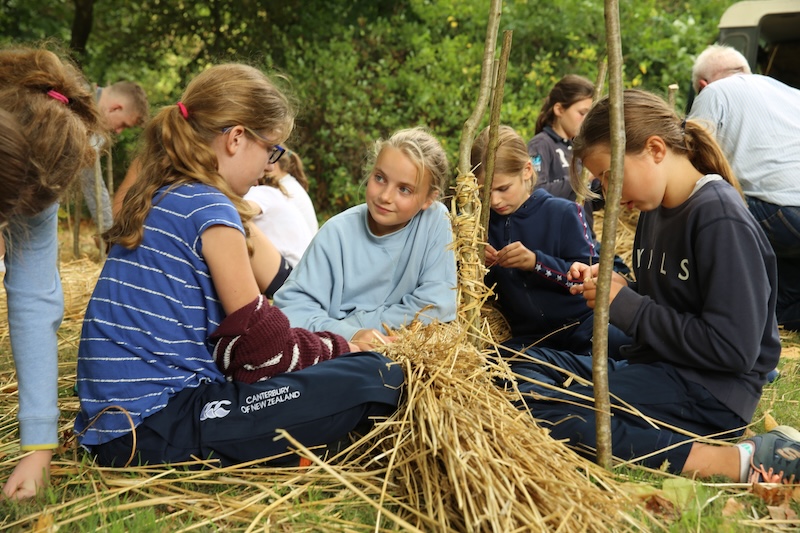Creativity in the curriculum
Posted on 30th Apr 2024 in Prep Schools Guide

Hilary Phillips, Head of Hanford School, shares why creativity has an important role to play in education.
We have just opened a new Art barn at Hanford. It’s a beautiful conversion of an old building and the activities that go on in there are truly amazing. As well as teaching all the usual artistic skills that you would find in a school, the girls at Hanford also learn how to felt, weave, knit and sew, completing projects such as making a pair of pyjamas or designing and creating a dress. Our juniors, because it is Hanford, have even made a large felt pony, complete with tack!
Across the UK the recent trend has been to push the creative arts further and further down the school curriculum list. Here at Hanford we take the opposite view and took the decision to invest in the creative arts. You may think that this means that Hanford already has a floodlit astroturf, a performing arts centre with fully equipped theatre, and a sports centre complex complete with climbing wall. But in truth, we don’t. Not that the girls suffer - set in beautiful and extensive grounds in Dorset our pupils have plenty of space for sport, plays, and gym. We climb trees, not walls!
We decided that the key to nurturing pupils and fostering a love of learning is in fact creativity. By having a welcoming space in the heart of the school where art is first and foremost, we set the tone and expectation for spreading creativity throughout all we do.
Chatting with employers, it’s interesting to hear what they want in their new young employees. It’s not a suite of top GCSE and A level grades followed by a first class degree from a distinguished university. What they want is a decent sort of person, one with a brain, initiative, energy, enthusiasm but above all, someone who is going to get on with people. Someone who can give a reasoned opinion, evaluate, disagree well, give and accept an apology and work as part of a team. Most importantly, they want someone with a creative mind who can solve problems.

We have all seen or read about technology taking over our lives and how it will soon render us obsolete; how AI is on the rise and if we are not all using it than we will be left languishing in the dust. Of course, we are going to need to understand how to use the tech around us, but we also need to be able to use it to empower our own thinking.
And so back to creativity. I recently heard a talk by Ben Edmonds who used to be Principal Engineer at Dyson. There is nothing that man can’t make with a piece of cardboard! If you don’t believe me, look up his Inventor Club. He summed up his approach to fostering creativity in our children. In essence, if teachers tell children what to do and how to do it then we take the power away from them. They will end up doing exactly what we can do and what is the point in that? Ben encourages educators to accept the fact that children are geniuses and can figure things out by themselves, they just need some support and a little guidance. What they need in huge amounts is a belief in their own abilities.
We should be telling children that there is no one way to solve a problem – there are hundreds; that no idea is a bad idea. We want to let children know that we believe in their abilities to problem solve and come up with creative solutions. This way we allow children to expand their minds and expand their potential.
At Hanford we know from experience that not only does this approach pay dividends, it also feels great. Helping children make things with their hands, getting satisfaction from making things work, not giving up; all these things are beneficial for their mental health.
So this is why creativity is woven into everything we do here at Hanford and why we will be continuing to ensure it is embedded in our curriculum. Everyone is creative in their own way and everyone has something to give. We will make sure that we always look for the way to simplify things, but also work to make ideas and projects more complex and challenging. The robots may be coming, but they won’t be taking over the world here at Hanford!
This article appears in the 2024 edition of John Catt's Preparatory Schools, which you can view here: